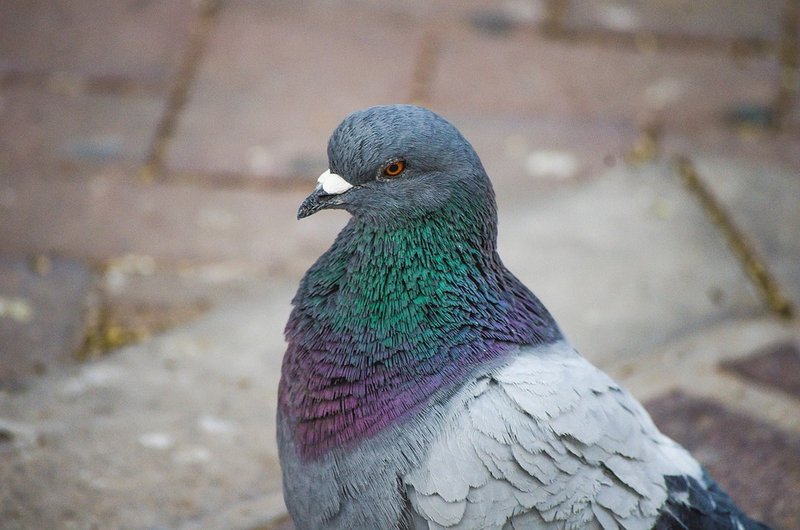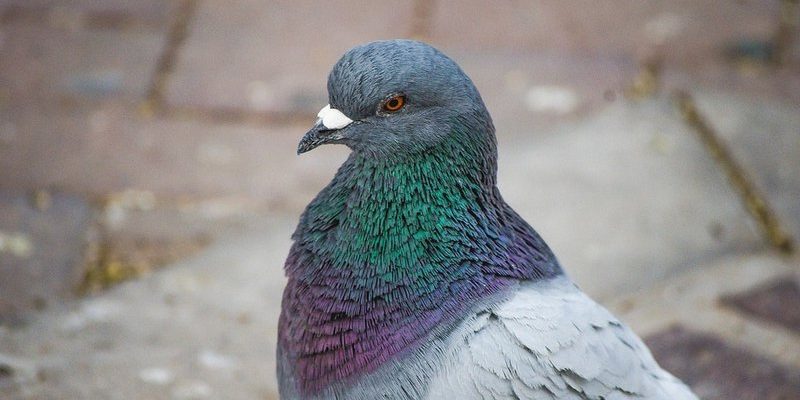
You might be surprised to learn that there are several types of pigeons, from the common city pigeon to more exotic breeds. Understanding how to spot these birds can bring a new layer of appreciation to your outdoor strolls. Whether you’re a casual bird-lover or just curious, knowing how to identify a pigeon can make your nature outings a little more engaging.
Common Types of Pigeons
To kick things off, let’s talk about the different types of pigeons you might come across. The most familiar one is the Rock Pigeon (also known as the Rock Dove). They are usually gray with a hint of iridescent green on their necks. Then, there’s the Mourning Dove, which has a more slender body, pointed tail, and soft brownish color. It’s easy to confuse these two if you’re not paying attention!
Another one you might see is the Feral Pigeon, which is essentially a domesticated version that’s returned to the wild. Their colors can vary widely, making them super interesting to spot. Lastly, there’s the Nicobar Pigeon, which is more exotic and less common in urban areas. It has a stunning plumage that shifts colors in the sunlight, but you might have to visit a zoo or a specialized bird sanctuary to see one of these beauties.
Physical Characteristics
Identifying pigeons isn’t just about knowing their names; it involves looking closely at their physical traits. Start with their size. Most pigeons are around the same size as a small dove, typically measuring between 9 to 14 inches long, but some can be larger or smaller.
Next, focus on their coloration. While Rock Pigeons are usually blue-gray, Feral Pigeons can sport a wild mix of hues, including browns, whites, and blacks. Take note of their wings—you’ll see a band of white or iridescent colors that can help differentiate them from other birds. And don’t forget about the tail; many pigeons have a square tail, while others have a pointed shape.
Behavioral Traits
Now let’s talk about the way pigeons behave. One of the most notable things about them is their social nature. Pigeons often gather in flocks, which can range from just a few birds to hundreds. Watching how they interact can give you valuable clues. For instance, if you see a lot of pigeons cooing and bobbing their heads together, you’re likely looking at a group of mating pairs or family units.
Another interesting behavior is their foraging habits. Pigeons typically peck at the ground for seeds, grains, and even scraps from humans. If you notice pigeons scavenging in parks or urban areas, they’re probably looking for a meal. Their ability to adapt behaviorally to different environments is a big factor in their success.
Sound and Communication
Identifying a pigeon isn’t just about their looks; it’s also about their sounds. Each type of pigeon has a unique call. For example, the cooing sound of a Mourning Dove is soft and plaintive, almost musical. In contrast, Rock Pigeons have a more common “coo-coo” sound that you might hear often around cityscapes.
Listening to their conversations can be incredibly enjoyable. You might notice that these birds use different sounds depending on their moods. They can express alarm, mating calls, or simple greetings. So, when you’re outside, take a moment to pause and listen. You might be surprised by how much you can learn just by tuning in to their vocalizations.
Habitat and Distribution
Understanding where pigeons live can help in identifying them too. Rock Pigeons are often found in urban areas, where they nest on ledges, rooftops, and cliffs. Their adaptability to city life is impressive! Meanwhile, Mourning Doves tend to prefer open areas with some trees or shrubs. They can often be seen in backyards or parks, searching for food on the ground.
If you venture into different environments, you might spot pigeons in more rural or agricultural areas. The Nicobar Pigeon, for instance, is usually found in the forests of Southeast Asia. Knowing where to look is half the battle in spotting different types of pigeons.
Use of Binoculars and Field Guides
If you’re serious about birdwatching, investing in a good pair of binoculars can enhance your experience. Binoculars help you get a closer look without disturbing the birds. You can see their feather patterns, colors, and even their little quirks.
Another useful tool is a field guide to birds. These guides typically include pictures and descriptions, making it easier to identify different species. You can find them in bookstores or online, and some even have apps that you can use for on-the-go identification.
Using these tools allows you to become more familiar with pigeon species over time, helping you feel more confident in spotting them.
Conservation and Awareness
Lastly, understanding pigeons goes beyond just identifying them. Being aware of their ecological role and challenges can enrich your appreciation. While pigeons are often seen as pests, they play a vital role in our ecosystems by helping to disperse seeds and serving as prey for larger birds.
Conservation efforts also become essential when you consider that some pigeon species are threatened due to habitat loss. Being mindful of their habitats and supporting local conservation initiatives can help ensure that these birds thrive for future generations. So, the next time you see a pigeon, remember there’s more to them than meets the eye!
In conclusion, identifying a pigeon in the wild isn’t just about spotting a bird; it’s about engaging with nature in a whole new way. By learning about their types, behaviors, sounds, and habitats, you’ll not only become a better birdwatcher but also a more informed nature lover. So, the next time you see a pigeon—whether it’s strutting around the park or cooing on your balcony—take a moment to appreciate its unique character and place in our world. Happy birdwatching!

